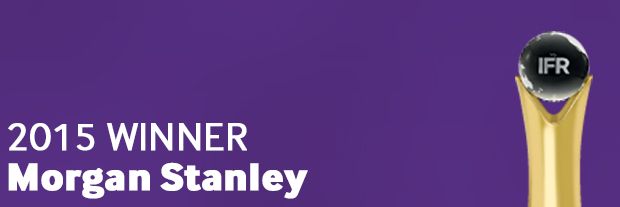Precision pricing
A rise in mandated business and drop in risk trades in 2015 played right to Morgan Stanley’s strengths. But the bank’s success in bringing the right companies to market at the best times and with the correct valuation were what made it IFR’s EMEA Equity House of the Year.
For once, 2015 represented a level playing field in EMEA equity capital markets. M&A activity was sufficient that being on the wrong side of one situation didn’t ruin your year. At the same time, the IPO market was extremely active, and auctioned blocks barely featured in the top deals.
The mega bank recaps of previous years, which often skewed the league tables in favour of those with large balance sheets, were also noticeably less important.
So it was a year when advice really came to the fore, and choppy markets meant the quality – or otherwise – of that advice quickly became clear. On just about every quality metric, Morgan Stanley excelled.
The bank’s focus on IPOs and mandated business saw it increase its deal total, market share and bookrunner league table credit year-on-year. The bank also had the most global coordinator roles on the top 25 cash equity deals – tied on 10 with Goldman Sachs.
But were those deals better executed than those led by other banks? The numbers suggest an emphatic yes.
Looking at IPOs by global coordinator, Morgan Stanley priced a higher proportion of its deals at or above the mid-point of guidance. Four out of 14 IPOs were priced at the top or above, and just one below the range.
Pricing above the top of the range is extremely rare in Europe, yet Morgan Stanley did it twice – on Aena and NNIT – while Worldpay was significantly upsized.
The bank also showed excellent judgement. When Covestro – a spin-off from Bayer – was struggling, it dropped the price range and cut the €2.5bn primary proceeds target to €1.5bn. The IPO could easily have been pulled, but it wasn’t.
“We had to perform open heart surgery to make it work,” said Henrik Gobel, co-head of global capital markets for EMEA at Morgan Stanley.
IPOs brought to market by the US bank traded better on their first day than those of rivals with a mean gain of 9.2%. Just one of 14 traded down – a hit rate rivals could not match.
After a month, investors were sitting on a mean gain of 14.4%. The rocketing stock price of Spanish airports operator Aena was a big component of this average gain, but again, just one deal was below water – compared with 30%–40% at rivals.
Critical to any deal is making sense of the orders that come in to the book and what investors really mean – and adjusting terms if necessary. Morgan Stanley showed its experience on that count again.
“We have been at the forefront of changing the IPO process,” said head of syndicate, Martin Thorneycroft. “An IPO is a price discovery exercise, but before, one went out with price and size and woe betide if you got it wrong.”
The upward revision on NNIT was all the more impressive as it was the first Danish IPO since a deal from OW Bunker. Not only had OW Bunker collapsed amid fraud and massive losses within eight months of its IPO, but that deal was led by Morgan Stanley, which many said would not be able to lead a Danish float again.
The bank also deserves plaudits for what it didn’t do, such as the €3bn BMPS rights issue. It was a willing bookrunner on 2014’s €5bn fundraising, but when asked to underwrite again four months later it declined as the risks were too high. Morgan Stanley and JP Morgan were the only institutions to do so.
Meanwhile, the bank was busy on the structured side with a lead role on the £250m hybrid convertible issued by Sainsbury’s concurrent to a £250m straight hybrid in late July and also on a rare pre-IPO bond for Aroundtown that looks set to be followed by a public offer and finally seemed to match the structure with an appropriate issuer, a real estate investor.
Santander’s €7.5bn ABB was the biggest ECM deal of the year in EMEA, but Morgan Stanley’s dribble-out of Lloyds shares on behalf of the UK government has been transformational. Since December 2014, the US bank has sold around 13% of Lloyds and delivered the state a £1.2bn profit. The government was so pleased with the six-month programme that it was extended to a full year.
To see the digital version of the IFR Review of the Year, please click here .
To purchase printed copies or a PDF of this report, please email gloria.balbastro@tr.com .
<object id="__symantecPKIClientMessenger" style="display: none;" data-install-updates-user-configuration="true" data-extension-version="0.4.0.129"></object>




